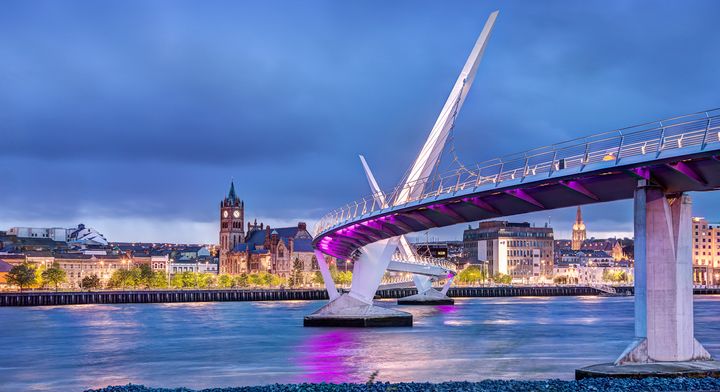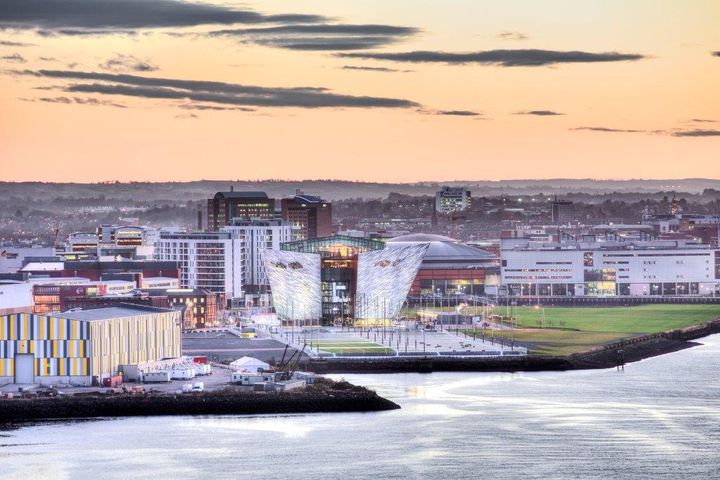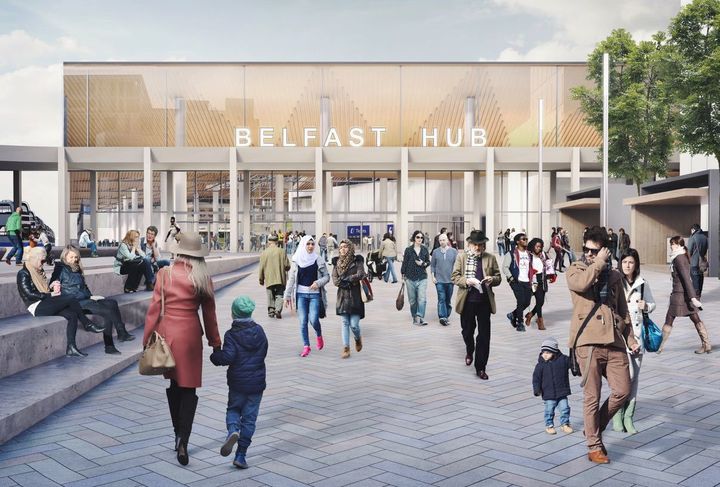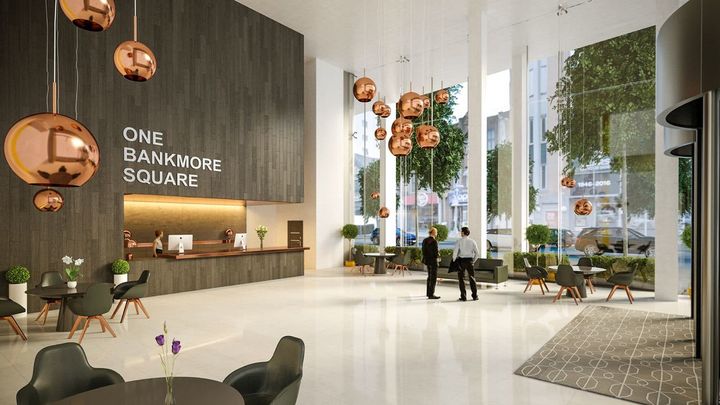
Derry/Londonderry, Northern Ireland
As any recent visitor to Belfast can tell you, the magnitude of construction and development in Northern Ireland’s largest city is plain to see. From east to west, the sky full of cranes dotting the landscape is bringing a multitude of new buildings. At the start of 2017, there were 30 projects under construction or recently completed in the capital alone. This included four new educational facilities, seven new student accommodation projects, six office developments and eight new hotels.
Much has been speculated about the challenges of Brexit and the implications of the UK leaving the European Union. Yet despite the uncertainty after the referendum of 18 months ago, the Northern Ireland economy continues its upward trajectory.
Data just released from commercial real estate consultancy CBRE found that Northern Ireland’s commercial property market saw an increase in the number of transactions and total investment in 2017 versus the previous year. In total, $435 million was invested across 43 separate transactions compared with $340 million across 36 transactions in 2016.
Unprecedented office demand
Perhaps surprising is the fact that Belfast has the third-strongest prime office rental cost growth in the world, just behind Bangkok and Stockholm. Office activity for 2017 looks likely to have exceeded the average take-up level over the last 10 years, with Grade A space dominating demand. Top-end office lettings in Belfast were up 40 percent during 2016, fueled in no small part by the U.S. and international firms that continue to invest here. Latest end-of-year figures show some 40,000 square meters (431,000 square foot) of office space rented during the course of 2016 - up 36 percent based on a five-year average. A further 53,000 square meters (570,000 square foot) of new office space is expected to be completed in 2018 with planning approved for a total of 181,000 square meters (1.9 million square foot).

Belfast’s Titanic Quarter
A $330 million expansion of Ulster University’s campus in Belfast city center will bring 18,000 students and staff into the city each day. The university continues to help meet the demand for a highly skilled workforce and the extensive campus expansion is stimulating further opportunity for mixed-use developments.
All this activity speaks volumes about the region’s regeneration and demonstrates a very real need to continue to create exciting new buildings to meet new business demands.
Investor-ready regeneration projects open to international investment
To help ensure we have the buildings and infrastructure in place required to meet current demand and spur additional growth, we have brought together and packaged a number of investor-ready projects for the first time in the region’s history. We want to make it easier for international investors to pick the regeneration opportunities best suited to their portfolios.
There are currently seven projects bundled in this portfolio ranging from mixed use, offices, hotels and retail, totaling investment of more than $2 billion.
One of the largest single projects is of major regional infrastructure and national significance - a new $600 million transport hub and mixed-use development in the heart of Belfast city center. This transport-led infrastructure regeneration element is due to commence later this year and is scheduled for completion in 2022. It will cater for an expected increase from 8-14 million passenger journeys to and from Belfast city center, resulting in one of the highest footfall areas in Northern Ireland.
The transport hub is one of only six flagship schemes that are supported by the Northern Ireland Executive and represents a government investment of some $260 million. The private investment opportunity is for mixed-use, multi-sector development around the hub that is significantly de-risked by the government investment in this major infrastructure project.

Rendering of the new Belfast Transport Hub
Companies continue to invest in Northern Ireland
Our recent success in attracting FDI (Northern Ireland had one of its best 12 month periods on record after the referendum) speaks to the fact that most companies – historically – have not come here for European market access. Take U.S. tech companies for example; they, in particular, have been attracted to the region because of the abundance of specific skills in areas such as cyber security, financial and legal-tech, where there is a growing need for this specialist expertise. Today, Northern Ireland is the leading destination globally for U.S. cyber security development projects and the number one destination globally for fintech development projects.
New opportunities post Brexit
Undoubtedly we will continue to attract this type of office-of-equals investment given global skills shortages in the areas in which we excel, but there is growing evidence that Northern Ireland can expand its value proposition in a different way in a post-Brexit environment.
Not much (if anything) has been discussed regarding the potential new opportunities presented to Northern Ireland post Brexit – including the region becoming a very attractive gateway to the rest of the United Kingdom, a market which happens to be the world’s sixth largest economy.
As we talk to U.S. and other international companies this view is being validated. We increasingly hear that post-Brexit market access to the UK is a new catalyst for these companies to consider Northern Ireland as an expansion destination. While we welcome the recent guarantee reached in negotiations that a hard border will not be established between the Republic of Ireland and Northern Ireland, we realize much is left to be resolved. However, as the only region in the UK to share a land border with the Eurozone, we are uniquely placed to capitalize on this potential new opportunity.
Consider the fact we offer a lower cost base than other locations in the UK, the best superfast broadband and good direct air linkages to London, Europe and the United States. To put it into context, Belfast is only one hour from London by air and two hours from Dublin by rail and road.
We believe companies whose European bases are situated in the Republic of Ireland may also potentially share a management team with their UK counterparts here in Northern Ireland, only an hour or two away. In that environment, Northern Ireland becomes an even more compelling destination.

Rendering of new lobby at One Bankmore Square
On top of all this, more and more people are visiting the region. In 2016, there were 4.6 million overnight trips in Northern Ireland. Significantly, visitors have also been staying longer and spending more. Northern Ireland’s thriving tourism sector has fueled demand for new and innovative property development schemes with growing numbers of visitors drawn to the world’s leading tourist attraction, Titanic Belfast, the Giant’s Causeway, our world-famous golf courses and locations made famous by HBO’s epic fantasy TV series Game of Thrones®, which has largely been filmed in Northern Ireland since its pilot 2010. As a result, six hotel deals worth an estimated £42 million were struck in 2017 alone. The ambition to double the size of the tourism sector, creating a $1.3 billion industry by 2020, will generate further development opportunities.
With visitor numbers increasing, a possible new market access value proposition and a steady flow of new economy jobs coming to a region considerably more cost competitive than the Republic of Ireland or the rest of the UK – we’re enthusiastic about our future growth potential.
To learn more about Northern Ireland’s regeneration projects, click here.
